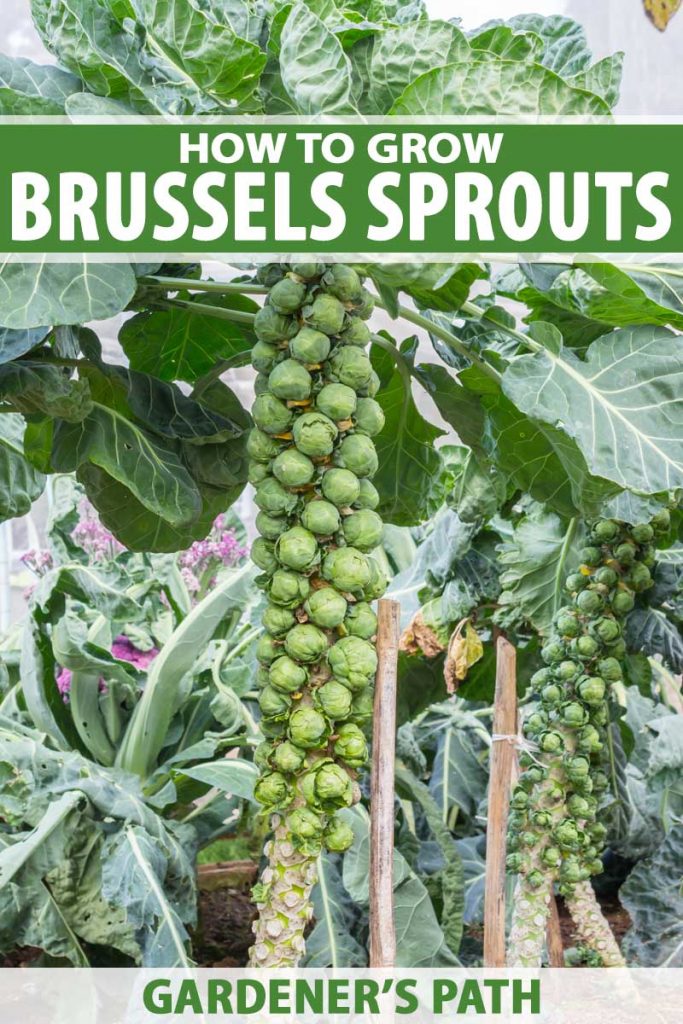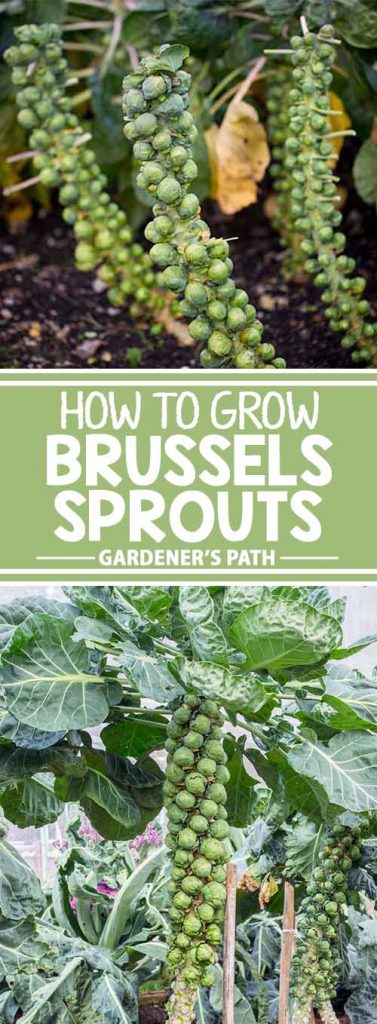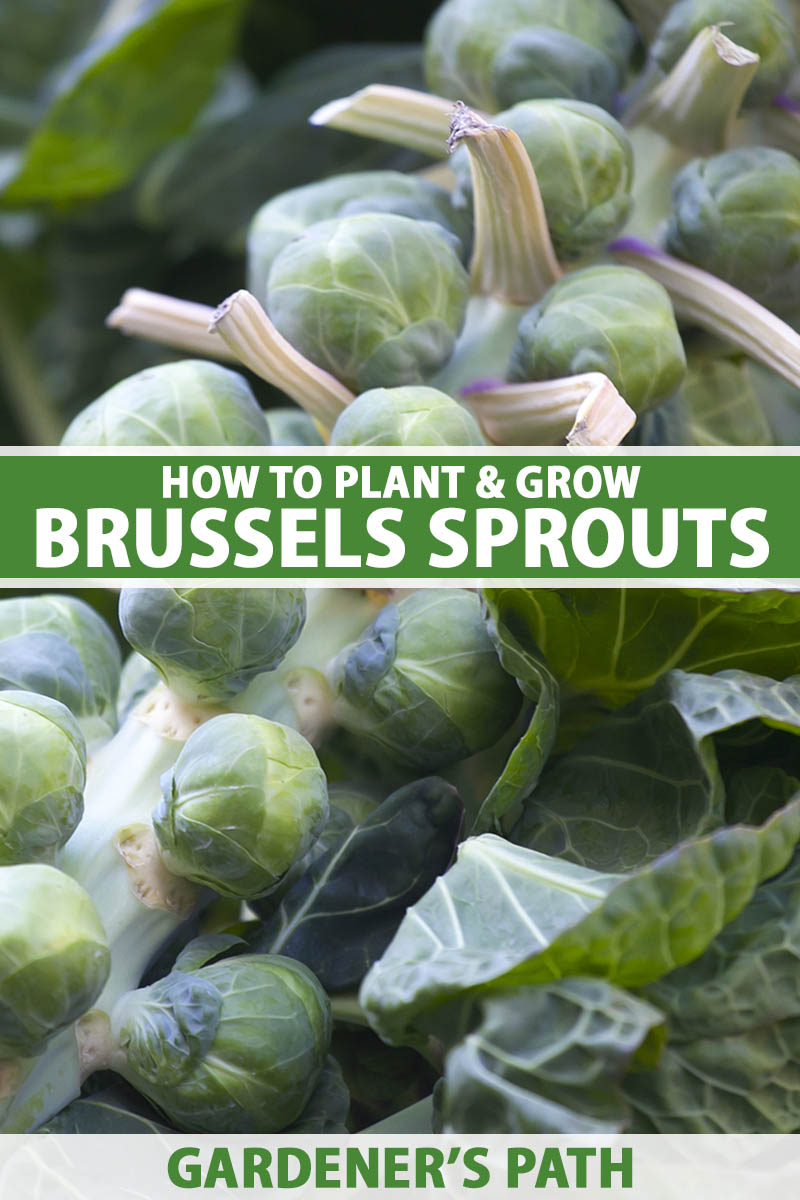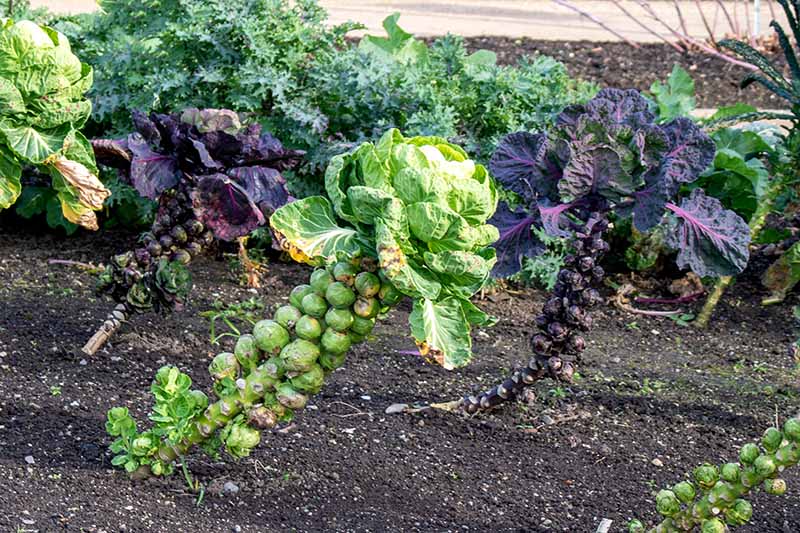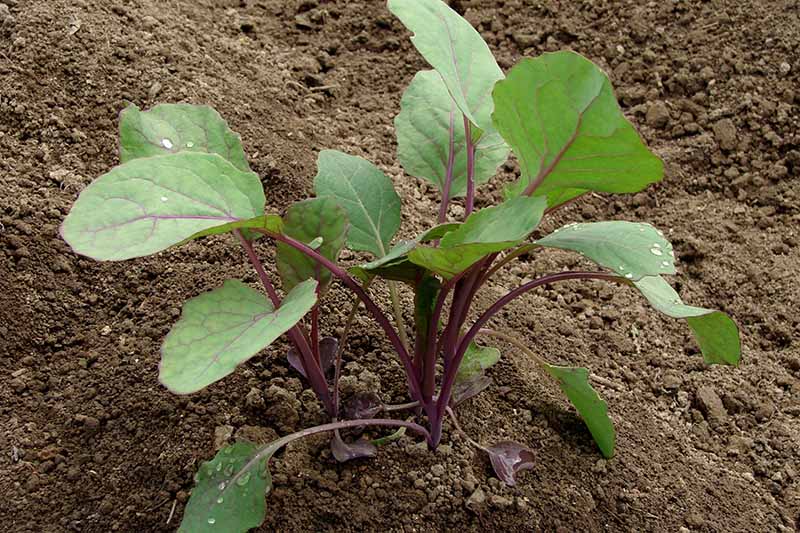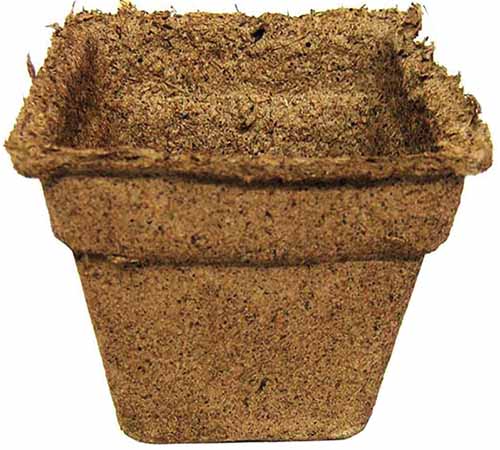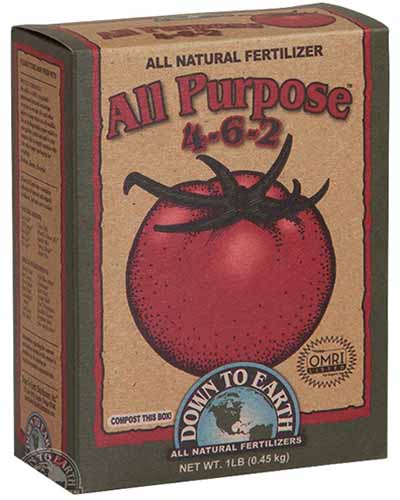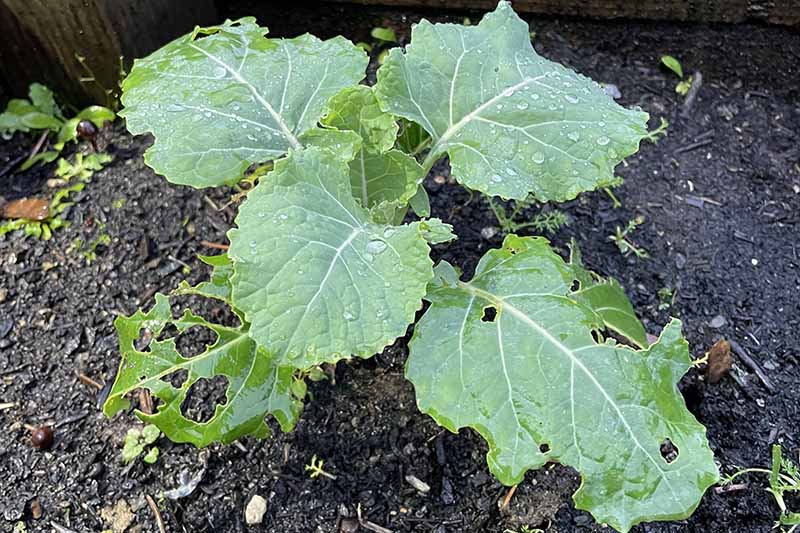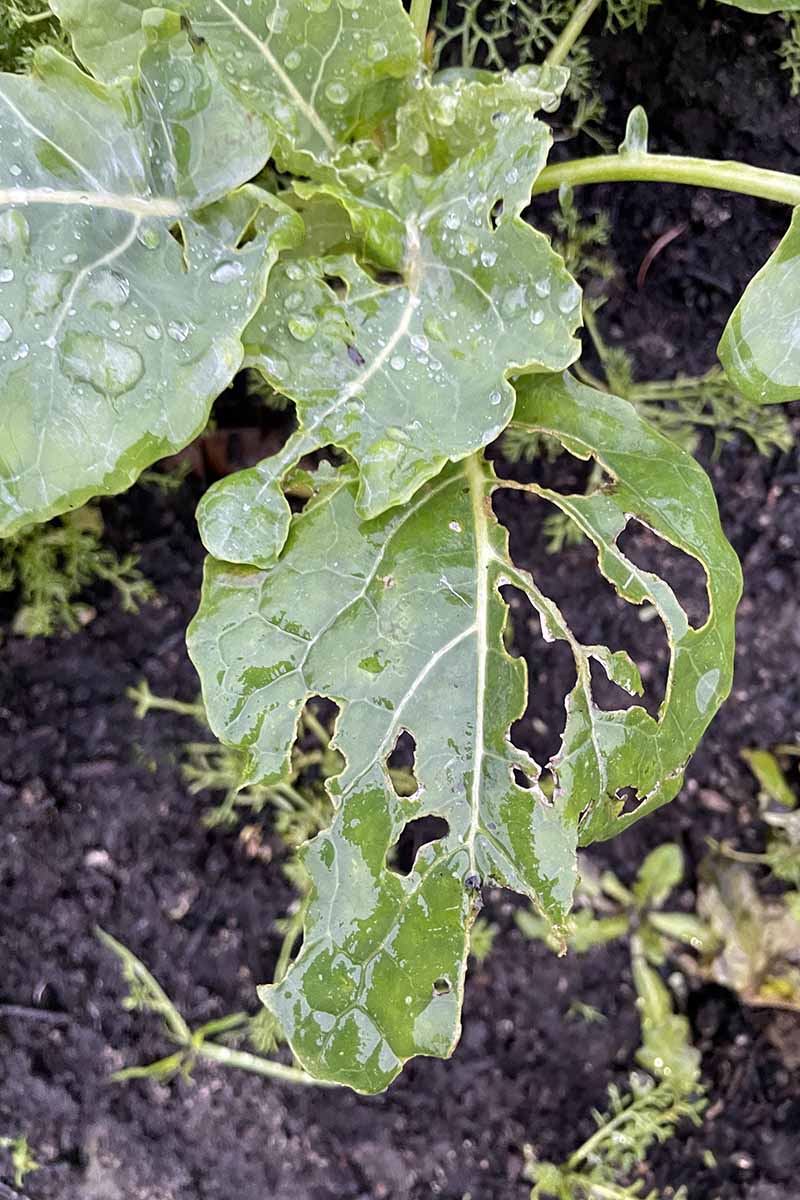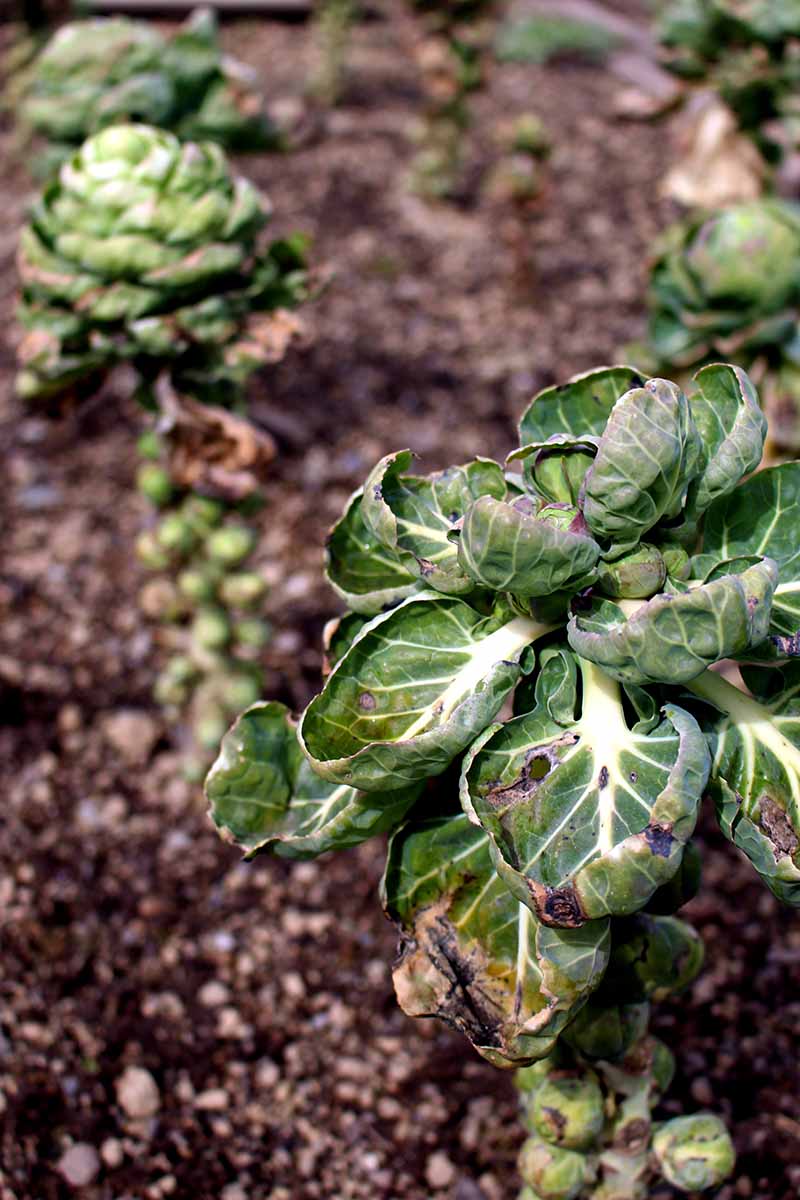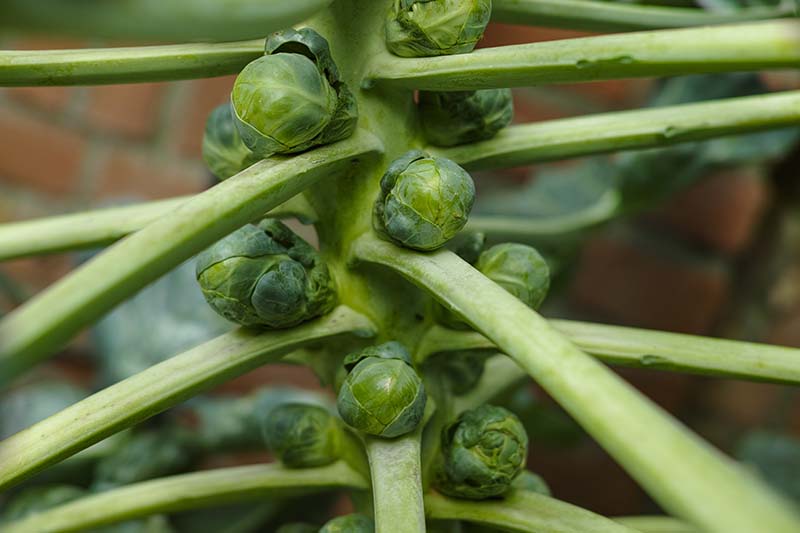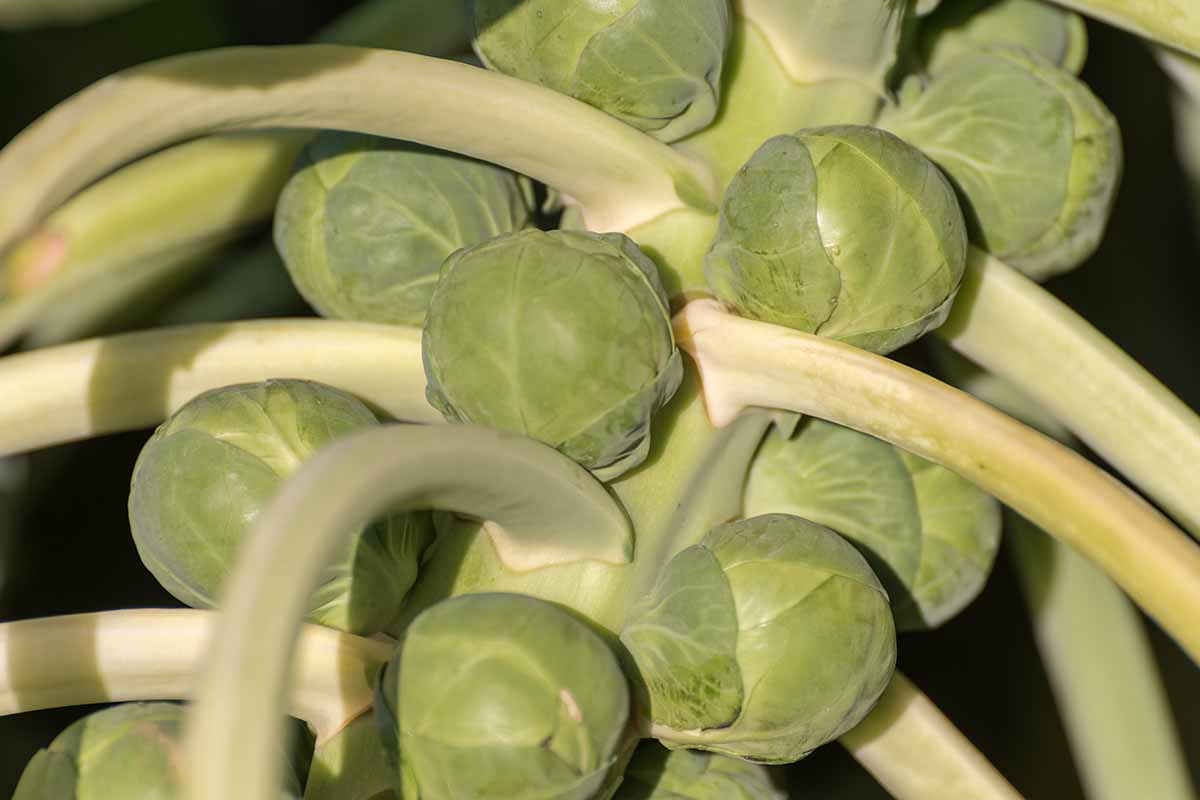My hand is up. My introduction to the infamous cruciferous veggie was in the form of the heads dumped out of a can and broiled within an inch of their lives. Now, how many of you grew to love them? Maybe you like them drizzled in olive oil, sprinkled with salt and pepper, and roasted in a hot oven. Or maybe sauteed with bacon and fennel? My mouth is watering just thinking about it. We link to vendors to help you find relevant products. If you buy from one of our links, we may earn a commission. Up ahead, here is what we’ll go over on our journey to grow the best buttons possible: As opposed to the bushes of heat-loving tomatoes and peppers that just everyone seems to grow in their backyard gardens in the heat of summer, brussels sprouts prefer a chilly nip in the air. They’re perfect as a cool-weather crop when the salsa fixin’s are but a memory.
Cultivation and History
By vegetable standards, brussels sprouts are quite youthful. According to Michigan State University Extension experts, the plant was unknown until about 400 years ago. It descended from wild mustard that grew in the Mediterranean and was first cultivated in Ancient Rome. Later, it was refined through careful selection to create the veggie we know today somewhere near Brussels, Belgium. Thus, the unsurprising name. In Dutch, they’re known simply as spruitjes, or sprouts. The first general description of these tasty green gems was recorded in 1587, according to Texas A&M Agrilife Extension experts. And some respected botanists as recently as the 17th century referred to it only as something they had heard of, but never seen. The plant made its way to North America around 1800, and it has been distressing American children ever since. In the 1990s, growers cultivated old varieties to create a modern sprout that wasn’t as bitter as the one most people were familiar with. At that point, the veggie with the bad reputation experienced a revival in the US. Brussels sprouts and their close relatives cabbage, cauliflower, and broccoli are colloquially referred to as “cole crops” and “cruciferous vegetables” – all varieties of the same species, Brassica oleracea. These plants need a long growing season with cool weather. They can be grown in USDA Hardiness Zones 2 to 9, but you might need to start them indoors if your growing season isn’t long enough before the heat or freezing weather arrives.
Propagation
There are two ways to propagate brussels sprouts: by planting seeds, or buying transplants. They grow well both ways. Seeds are more affordable, but you do lose a little bit of time in the growing season while you wait for the seeds to germinate and mature.
From Seed
Brussels sprouts are reliable germinators and grow easily from seed. You can start them indoors or out, depending on how many growing days you have ahead. The challenge is in starting them early enough indoors that you have plenty of cool days for the plants to mature outside, but not so early that the plants grow leggy and weak from too much time spent indoors. Northern gardeners can direct-sow as early as mid-June, reap the taste-enhancing benefits of a frost or two, and enjoy these tasty treats at Thanksgiving. There’s no need to start seeds indoors for fall growing unless the summer promises to be a scorcher. Then, you can start them in June or early July and keep them inside for up to six weeks, provided they have full sun or supplemental lighting. For spring planting, you want to put those seedlings in the ground as early as possible. Plan on starting your seeds four to six weeks before the last projected frost date in your area at the latest. Don’t be afraid to start even earlier. If a surprise frost comes to visit, you can always give your seedlings a little blanket. A brief late-season dusting of snow won’t hurt them. If you don’t mind the extra weather-watching you’ll need to do, you can also opt to start seedlings indoors eight weeks before the last projected frost date, and then transplant them outside two weeks before that date. You might want to harden the seedlings off for a week, depending on your local weather. If the climate is mild, you can usually get away with skipping this step. But if you experience wind or extreme temperatures, place the seedlings outside in a protected area for an hour and then bring them back inside. The next day, place them outside for two hours, three hours on the third day, and so on. After a week, they should be good to put into the ground. Don’t risk planting directly in the soil if you have a limited number of cool days available in the spring in your region. You can even place the seeds directly in the soil several weeks before the last projected frost date to maximize the number of cool growing days. Gardeners further to the south can almost certainly get a fall crop in, though the sprouts might not be ready for Turkey Day. Start seeds outdoors 10 weeks before the first projected frost date. Feel free to start the seeds indoors if you’re having a late-season heatwave. Things get tricky when southern gardeners get a little cocky and think maybe they can also get a spring harvest in. If you think you can plant a spring crop early enough for it to enjoy a bit of frost, but not too much chill, and have them vegging out before daytime temps get above 75°F, go for it! Play with different varieties to get the timing right, based on your local weather patterns. According to the Cornell University Gardening Guide, shorter plants tend to mature earlier and be more tolerant of the cold. If you want to grow your own transplants, plant seeds a quarter to half an inch deep in four-inch-wide containers filled with a seed starting medium.
From Seedlings
While they’re exceptionally easy to start from seed, you can also often find seedlings at the nursery or garden center for transplanting. If you can find transplants early, you can get a head-start on the growing season. I love CowPots because they’re made out of a renewable resource (cow poop) and they feed your plants as they compost into the soil. Biodegradable CowPots Arbico Organics carries #4 square pots in counts of 12, 180, and 450. Place the seeds in an area where they will receive full sun. Water well, and keep the soil moist but not wet. You can transplant the seedlings when they are about three inches tall. If you keep the seedlings indoors for more than four weeks, they’ll need supplemental lighting unless they’re receiving eight hours of direct sunlight each day. Prepare the bed by working some compost into the soil to improve drainage and water retention. These vegetables prefer well-drained, loamy, fertile soil with lots of organic matter, and a pH of 6.0 to 6.8. Dig a hole slightly wider than the size of the container that the transplant is growing in. Plants need appropriate spacing for the largest yield possible. Providing at least 19 inches of space for each plant is ideal. Try to plant in full sun. These veggies will tolerate light shade, but this will slow their maturity, and we’re already in a race with time. Remove the transplant from its container (unless it’s growing in a compostable pot) and lower it into the hole so that it sits at the same height as it was in the original container. Fill in around it with soil, and water to settle it in. Apply a thick layer of mulch for moisture retention and weed suppression.
How to Grow
Most varieties of this plant have an extremely long growing season with a lengthy interval between planting and harvest, as many as 130 days – though there are some shorter-season varieties, which will have your kids singing the blues in as few as 80 days. On top of the long growing season, the days need to be cool. Anything above 75°F and the plant will likely bolt and go to seed. That means no sprouts for you, if it happens! If you plant in the spring, the earlier the better. You will be harvesting more buds if you plant early because the plant has more time to develop before the heat hits. This little persnickety veggie prefers temperatures between 45 and 75°F. It will tolerate a day or two down around 20°F, but not any longer. Oh, and did we mention that they greatly appreciate a little nip of frost to really enhance their flavor? They can even grow well into the winter in temperate areas. We go into more detail about growing brussels sprouts during winter in this article. Keep the soil moist, but not soaked. Brussels sprouts like quite a bit of water, but you don’t want to drown them. The soil should constantly feel like a well-wrung out sponge, but not soggy. If you can take a handful of soil and make a ball in your hand and it holds together, the soil is too wet. It should crumble. Mustard will attract all kinds of pests, which will consequently leave your spruitjes alone if you grow it as a trap crop. Down to Earth makes an excellent all-purpose fertilizer, which comes in compostable boxes. To achieve your brussels sprouts dreams, head to Arbico Organics to grab a one- or five-pound box. Down to Earth All Purpose Mix These plants have shallow root systems, so you’ll want to be careful with the hoe to avoid damaging the roots. Because there are quite a few pests and diseases out there waiting eagerly for their chance to chomp on any available cole crops, don’t plant your brussels sprouts near any of their close relatives, except mustard. You can also companion plant with nasturtiums and marigolds, which attract beneficial insects such as ladybugs and lacewings that can help to deal with problem bugs.
Growing Tips
Plant as early in the spring as possible, or after the heat of summer has passed.A brief frost when plants are mature enhances flavor.Keep the soil moist.Grow in full sun.
Pruning and Maintenance
Brussels sprouts can use a little extra pruning to maximize your harvest. Some gardeners remove the lowest leaves on the stalk to speed up the development of the edible orbs. Some growers also swear by what is known as topping, which is the practice of lopping off the top of the plant to encourage larger heads. So what’s the right thing to do? First, refrain from removing lower leaves unless you have a good reason to. Good reasons include diseases, or other problems. If you see fungi, spotting, yellowing, or browning leaves, go ahead and remove those that are affected. If you planted yours too close together, you might want to remove a few of the lower leaves to improve air circulation. Topping can be done anywhere from 30 to 60 days before harvest. At that point, remove the small top leaves. This has been shown to help encourage the buds to mature at the same time, and to be slightly larger. For more tips on how to prune, read our comprehensive guide. While they’re growing, keep an eye out for lodging. This is when the plants start to fall over or tilt, usually because the heavy heads act like sails in strong wind. Crowded plants tend to have thinner stalks, and consequently, they are more prone to lodging. To help prevent this, you can heap six inches of soil up the base of the plants once they’ve reached their mature height. ‘Dagan,’ ‘Gustus,’ ‘Hestia,’ ‘Jade Cross,’ ‘Nelson,’ and ‘Tasty Nuggets’ are all resistant to lodging, so these may be good picks for next season if you’d had a problem in the past.
Managing Pests and Disease
Brussels sprouts are susceptible to the same bugs and diseases that plague other cole crops. Northern gardeners tend to have good luck with ‘Long Island Improved’ because this cultivar has a relatively short length of time to maturity, and these are extra tolerant of cold weather. ‘Long Island Improved’ This variety, which Eden Brothers carries in a range of seed packet and package sizes, produces tightly packed one-inch veggies. But kids in northern climes might lobby for ‘Rubine,’ as this red-hued type takes a leisurely 105 days or so to mature. ‘Rubine’ Southern gardeners might like ‘Jade Cross’ because this compact beauty is more tolerant of heat than others. And gardeners looking for a quick fix might want to try ‘Oliver,’ which matures just 85 days from transplanting. Also suitable for the South are ‘Diablo,’ ‘Royal Marvel,’ and ‘Tasty Nugget,’ according to experts at the Texas A&M Agrilife Extension. Our guide to the best brussels sprouts varieties can help you to make the right choice for your garden. To be perfectly frank, growing brussels sprouts is hard. They’re fussy and there is a lot that can go wrong. You don’t want to be dealing with pests and diseases, because you’ll have enough on your hands to worry about from an environmental standpoint. So it’s best to take whatever preventive measures you can, to ward off future issues.
Herbivores
Many herbivores didn’t grow up despising sprouts like we did, and they’ll dive in the second they have a chance. While I can’t fault their taste, I’d rather they try something else instead.
Birds
I spend a ridiculous amount of time and money enticing birds to visit my yard. Between the suet, the peanuts, and the special seeds, it’s almost like feeding another family member. But I don’t mind because I get to enjoy their antics – and they devour the bugs that like to bother my plants in exchange. Unfortunately, the same birds often won’t hesitate to nibble on the edges of young leaves. Typically, the damage isn’t too serious, but young seedlings with just a few leaves might be stunted enough that they won’t grow to size in time for a harvest. Even with larger young plants, the bird nibbling coupled with pressure from slugs and other pests can prove to be too much. Wire cages can protect tiny plants, and row covers offer a multi-purpose solution for older ones. Once the leaves are larger and the heads are forming, you don’t need to worry about our avian friends. You might want to leave the row covers in place, though, to protect against invertebrates, which we will discuss in just a bit.
Deer
Deer seem to love cole crops. Give them a choice between a leafy head of immature sprouts and a mouthful of squash, and it’s a pretty safe bet that they’ll pick the former. They typically cause serious damage only when the plants are small and haven’t formed a tall, thick stalk quite yet. Once the stalk grows tall, deer might nibble on the leaves or even try to nab a sprout or two, but the damage is usually limited at this point. Our guide to keeping deer out of your garden can arm you to protect your precious veggies.
Rabbits
Rabbits will snack on young brussels sprouts but they leave mature plants alone. Learn how to keep rabbits out of your veggie patch with our guide.
Voles
Whether you call them meadow mice or voles, these little rodents are major pests. They can devour a row of seedlings in a night or two, though populations tend to fluctuate from one year to the next. The year following a veggie patch massacre, they might hardly be a problem at all. If you see a maze of pathways moving through your garden, it’s a tell-tale sign that these pests have come to call. You might also see their burrow openings and droppings. Fencing that extends nine inches underground and a foot aboveground is a pretty reliable option to put a stop to their exploring. Growing a few of their favorite plants outside the fence and away from your edible garden can often be enough to distract them from the more important food crops. They can’t resist fruit trees, seeds, grasses, and plants with sweet roots like carrots and parsnips. It is possible to bait and trap them, but that’s not really a great solution because you then need to either kill the voles, or release them somewhere else where they will likely just become someone else’s problem.
Insects
Pretty much any bug that makes a meal out of other Brassicas will eat brussels sprouts. That includes aphids, caterpillars, flea beetles, and slugs and snails. There’s a pretty solid chance you’ll run up against them at one point or another, but you can discourage them by rotating your crops so cole crops aren’t grown in the same place more than once every two years. Interplanting and removing weeds can also help. For more information on how to identify, eliminate, and prevent these (and other) invertebrates from infesting your crop, read our guide.
Disease
All plants are subject to problems from various disease-causing pathogens. Fungi, in particular, love brussels sprouts as much as we do. Leaf spot, rot, clubroot, downy mildew, powdery mildew, and damping off are all common issues. Do your best to avoid fungal infections and other diseases in the first place by rotating your crops every two years, keeping the weeds out of your beds, and watering at the soil level rather than on the leaves. These strategies are good gardening practices that you should try to stick to in general, and with cole crops in particular. We have a helpful guide that provides all the details you need to identify common diseases, and stop them in their tracks.
Harvesting
Twist, snap, or cut off sprouts when they are hard, compact, deep green, and the mature size for your selected cultivar. Some of these qualities can vary, depending on the type you are growing. Generally, these cruciferous vegetables are ready to harvest when they’re one to one and a half inches in diameter. Some are larger or smaller – and some may not even be green! Pick after frosty weather for the best flavor. The lower vegetables on each plant usually mature first, and you’ll want to pluck the globes of goodness before they turn yellow. Yellow leaves are bitter and unappealing – even to adults. If you didn’t remove the lower leaves already, remove them after the first harvest to encourage the plant to grow taller and produce more buds. Near the end of the growing season, when you know it’s about to get too cold or too hot for the plant to continue producing, you can harvest the entire stalk. The stalk is actually edible as well, but it has a tough outer layer that you should remove. The process is fairly simple, but our article on harvesting brussels sprouts has even more information to ensure success.
Preserving
There are a few ways to preserve your crop if you end up with more sprouts than you can use up fresh. Consider freezing, drying, or pickling. You can keep the veggies fresh for up to a week in the refrigerator. If you cut off the entire stalk, place the cut end in a bowl of water and put this in the refrigerator. It takes up a lot of room, but they’ll last for at least a week this way. Otherwise, place the heads in an airtight container, or in a plastic bag in the vegetable crisper drawer. To freeze, they must be blanched first. This involves boiling them for three or four minutes, and then removing them from the water and immersing them in ice water. Let them sit for a minute to stop the cooking process, then lay them out on a towel to dry completely. Once they’re dry, place them in plastic bags, seal, and slap ‘em in the freezer. For pickling, you need to boil them for 10 minutes, slice the heads in half, and pack them in sterilized jars, leaving an inch of headspace at the top. Next, boil equal parts water and white vinegar, plus a teaspoon of salt for each pint of liquid. Allow the mixture to cool slightly. Add your chosen spices and other flavorful ingredients (pepper, garlic, red pepper flakes, lemon, and so on) to the liquid, then fill each jar with the flavorful brine until there is half an inch of headroom at the top. Refrigerate for several weeks, until the flavor is to your liking. Dehydrating is less common, but entirely possible. Boil the heads for 10 minutes and remove them from the water. Slice them in half and place them on a towel to dry completely. Place in a dehydrator set to 125°F for 10 to 12 hours, or until completely dry. You can store them for up to a year once dried, in an airtight container.
Recipes and Cooking Ideas
You probably have a favorite recipe already, but you can never have too many methods to bring these veggies to life in your repertoire. Brussels get a major makeover with this caramelized red chili version from our sister site, Foodal. This side dish is simple to make, and it goes with just about any type of protein. It’s a spicy and flavorful way to enjoy brussels sprouts that you’ll want to make over and over again! If you have picky eaters in the family that won’t normally eat sprouts, try adding bacon. Bacon makes everything better, right? And the brussels are cooked al dente (so they’re still firm) rather than being squishy. Plus, the added fat helps your body to absorb the fat-soluble nutrients packed into the sprouts. That’s what we call a win-win! Visit Foodal now for the recipe. Who knows, if you’re really lucky, you might start a new Memorial Day tradition: Brussels sprout salad to go along with your burgers and grilled corn. Won’t the kids just love that? Or maybe they’ll appear on your Thanksgiving buffet. Seriously, though, maybe the kids will even learn like them. Repeat exposure is key when you’re aiming to adjust a picky palate to new veggie flavors. Have you grown spruitjes? In the comments section below, tell us what zone or region you’re growing in, when you plant, and when you harvest. We’d love to compare notes! Want some more cole crop garden inspiration? Read these growing guides next:
Growing Kohlrabi: The Hearty Above-Ground RootHow to Grow Collard Greens, A Taste of Southern CultureHow to Grow Broccolini
